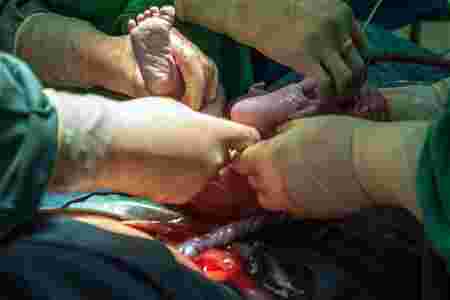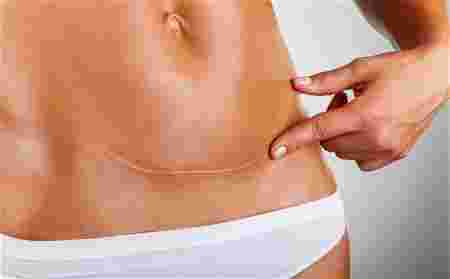Recent reports show that more and more moms worldwide are opting to give birth via Caesarean section (C-section or CS) over vaginal delivery. In the UK, one in four births is via CS, and in the US it’s one in three. In Brazil, it is said that there are hospitals that deliver nearly 100% of babies surgically.
China has the largest percentage of C-section procedures among Asian countries, at about 50%. Compared to its neighbors, the Philippines has a significantly lower rate of CS deliveries, but the figure is still on the rise.

More and more moms worldwide are choosing to give birth via C-section.
Why this rise in numbers?
More than the numbers, it is the reason behind requests for a Caesarean section that is surprising. In developing countries, it is apparently because of the availability of improved medical facilities, and also an increase in patient wealth.
In many Asian countries, it is done to match the birth date to lucky dates as dictated by fortune tellers. Some also view it as a safer alternative to vaginal birth.

A CS birth may not be the best option for your little one, after all.
New findings on health risks after a Caesarean section
New research shows that opting for surgery when it’s time to deliver presents health risks later on, not to mothers, but to their babies. Three chronic illnesses have been tied to the procedure – Asthma, type 1 diabetes, and obesity.
Asthma is a lung disease in which there is difficulty in breathing caused by blocked or narrowed airways. It is still unclear why some people suffer from this while others don’t, but asthma is known to be triggered by both genetic and environmental factors.
Type 1 diabetes is a condition wherein the body does not produce insulin, a hormone needed to convert sugar and starches into energy. It is usually diagnosed early in life, and is a rare form of the disease.
Obesity is defined as having an abnormally high level of accumulated fat in the body. People who are obese face even more health risks, including heart disease, diabetes and cancer.
The study that these results are based on was conducted by researchers in New York University in the United States and Peking University in China. There is no conclusive data, however, as to why these illnesses have been linked to C-sections.
Click “Continue reading” for the pros and cons of delivering vaginally or via C-section.

Did you know that you can still deliver vaginally after a Caesarean section?
Think smart about your birthing options
A child who is delivered surgically lacks exposure to the mother’s fecal and vaginal bacteria. Researchers believe that this could be a factor linking Caesarian births to the three illnesses mentioned. The bacteria that CS babies miss out on are essential to a person’s immune and digestive systems.
Fortunately, most obstetricians in the Philippines still recommend a vaginal delivery over a C-section. At the same time, most moms choose to deliver naturally, as well. Often, economic concerns are the reasons behind the choice of non-surgical delivery, as Caesarean procedures do cost a lot more.
The good news is that this could mean that babies born here are not as likely to incur these illnesses as a result of how they were born.
Remember to think smart about your birthing options before deciding to go under the knife. Here are known pros and cons to both a vaginal delivery and a Caesarean section, to help you make an informed choice.
Vaginal birth pros
- Shorter recovery period as compared to a C-section
- The procedure is not considered major surgery
- The process of a vaginal delivery is more likely to squeeze fluid out of a baby’s lungs resulting in a lower risk of breathing problems at birth
- Babies are exposed to good bacteria when they go through the mother’s birthing canal
Vaginal birth cons
- Risk of stretching and tearing of the vaginal tissue
- Risk of weakening of the pelvic muscles, which control urine and bowel movement
- Possible lingering pain in the area between the vagina and the anus
- Babies may be injured in long labor scenarios, and could suffer from bruised scalps or fractured collarbones
Caesarean section pros
- Predictable date of delivery, which may be scheduled in advance
- Mothers do not go through the long labor process
- It is a birthing option for moms whose pelvic areas are narrow
Caesarean section cons
- High risk of complications for women who are obese, or who suffer from chronic heart disease
- Considered as major surgery
- Greater risk of infection and blood loss compared to vaginal delivery
- Longer recovery period
- Babies are more likely to experience breathing problems after a C-section delivery.
There are many things that you should consider together with your OB-GYN when you are about to give birth. Your health, the position of your baby, and whether or not you have had a CS before are all points of consideration.
ABOUT THE AUTHOR: Patricia de Castro-Cuyugan
If you have any insights, questions or comments regarding the topic, please share them in our Comment box below. Like us on Facebook and follow us on Google+ to stay up-to-date on the latest from theAsianparent.com Philippines!